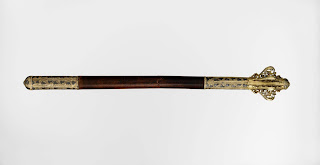The Hagia Sophia "Ayasofya" Istanbul
The Hagia Sophia
The Hagia Sophia (Greek: Ἁγία Σοφία, Latin: Sancta Sophia or Sancta Sapientia ) meaning "Holy Wisdom", is the biggest church constructed by the Roman Empire in Constantinople, it has been constructed three times in the same location. The current structure was constructed by Isidoros and Anthemios, who were renowned architects of their time, by Emperor Justinianos’s (527-565) orders. The third Hagia Sophia construction combined the traditional basilical plan with the central dome plan in design. During the Roman period, the Hagia Sophia was the Empire Church and, as a result, was the place in which the emperors were crowned. Following Fatih Sultan Mehmed Khan’s (1451-1481) conquer in 1453, Hagia Sophia was renovated into a mosque. The structure was fortified and was well protected and remained as a mosque. The Hagia Sophia was converted into a museum by Mustafa Kemal Atatürk’s orders and The Council of Ministers decision, it has been functioning as one since February 1, 1935, welcoming both local and foreign visitors.
Ayasofya
Ayasofya Roma İmparatorluğu’nun Konstantiniye’de inşaa etmiş olduğu en büyük kilise olup aynı yerde üç kez inşa edilmiştir. Günümüz Ayasofya’sı İmparator Justinianos (527-565) tarafından dönemin iki önemli mimarı olan İsidoros ile Anthemios’a yaptırılmıştır. Üçüncü Ayasofya’nın mimarisi geleneksel bazilikal plan ile merkezi kubbeli planı bir araya getirmiştir. Ayasofya Roma Döneminde İmparatorluk Kilisesi olması nedeniyle İmparatorların taç giyme merasimlerinin yapıldığı mekândı. Ayasofya, Fatih Sultan Mehmet Hanın (1451-1481) 1453’te İstanbul’u fethetmesiyle camiye çevrilmiştir. Fetihten hemen sonra yapı güçlendirilerek en iyi şekilde korunmuş ve cami olarak varlığını sürdürmüştür. Ayasofya Mustafa Kemal Atatürk’ün emri ve Bakanlar Kurulu kararı ile müzeye çevrilmiş ve 1 Şubat 1935’den itibaren müze olarak, yerli ve yabancı ziyaretçilere açılmıştır.




Comments
Post a Comment